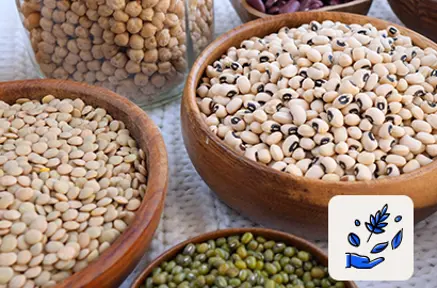What is driving the plant-based boom?

Plant-based. A term that was still a little unfamiliar just a decade ago is now a part of our everyday vocabulary. First introduced in the 1980s to advocate a high-fiber, vegetable-based diet, the phrase took on a new life in the mid-2010s, disrupting the food and beverage market with an explosion of products. Plant-based, as a category, has not looked back since then. As of today, the market is projected to grow to $160B by 2030.
Over the last few years, plant-based has been a top food and beverage trend in the global market and the evolution of these trends tell their own story.

Power to the plants
2017: More products that emphasize plants as key ingredients
Source: Mintel

Flexitarians are a driving force
2020: 40% consumers are reducing consumption of animal-based products
Source: Euromonitor

Rise of plant-based in new normal
2021: 28% consumers plan to change their diets to include more plant-based
Source: FMCG Guru

Unlock a new narrative
2023: A demand to go beyond mimicking to offer authentic flavors and tastes
Source: Innova
A lasting shift demands more
As the plant-based market matures, consumers want more from their food and beverage products, be it in terms of taste, texture, health benefits, or convenience. This is leading to manufacturers pushing the boundaries with innovation in product development, adoption of new ingredients, and even more sustainable packaging. Put simply, it is time for more.
Health, sustainability, and variety
Health and sustainability continue to be key drivers in the plant-based sector with consumers prioritizing conscious consumption, opting for food and beverage that are not only good for them but also for the planet. Variety, however, is a new motivating factor, especially for flexitarians looking to diversify their diet with more plant-based options.
It is not just about replacing meat and dairy with alternatives but about exploring the rich array of tastes that plant-based ingredients offer. The shift is especially pronounced among younger consumers. Gen Z leads the way with a strong commitment to sustainability and a curiosity for new culinary experiences. Millennials, on the other hand are more motivated by health benefits alongside environmental considerations.
Fueling the force of plant-based
Despite the exponential growth, the plant-based market does have its challenges, as we discussed in an earlier blog post examining the key complexities for manufacturers. As per latest research, the top barriers to more widespread adoption of plant-based offerings are the perception that these products are more processed and lack of convenient options. An average of 36% consumers in India, Chile and Spain say they would eat more plant-based meat or dairy alternatives if they were less processed. The demand shows that clean-label products with transparent communication are the future. At the same time, offering convenience through easy, on-the-go packaging formats could be a game-changer.
We, at SIG, can help manufacturers capture attention on the shelves with our wide range of sustainable packaging solutions that come in varied sizes, offering convenience both at home and on the go.
The world of plant-based has much to offer. Explore our insights by downloading the whitepaper or subscribe to our monthly newsletter to get the next story in your inbox where we will discuss the top ingredients in plant-based beverages.

Expert take: Recipe for a plant-based future

What’s pushing plant-based boundaries?

